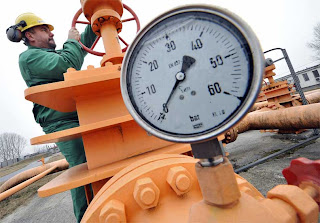Competition between Iran and Qatar in LNG production

Iran's prospects to increase production of LNG in the near future are doubtful. Low production levels, the stagnation in gas production projects, and the lack of local infrastructure for the construction of a gas liquefaction plant, outweighs the high demand for gas in the country.
As LNG production company head, Ali Kheyrandish said in an interview with the Iranian Mehr news agency, $ 450 million are allocated for the implementation of projects for gas liquefaction, and by 2015 the plan is to bring LNG's production to 70 million tons per year.
Last month, Qatar, the world leader in LNG production, brought the export of liquefied natural gas to 77 million tons per year, while launching the 6th and 7th phases of the "Katargaz" project.
Leaving behind in 2002 Indonesia, ensuring 21 percent of the world's LNG, Qatar by upgrading its plants, produced 21 million tons of liquefied natural gas in 2006 . Over the past four years, Qatar has been able to increase LNG production by 3.85 times. And, unlike Iran with 77 million inhabitants subjected to international sanctions, Qatar has a population of just 1.2 million, and international companies are actively implementing large-scale gas projects in the country. In 2009, Qatari gas exports amounts reached 68.2 million tons, while gas production in Iran is still below the level of domestic demand.
At present Iran produces 110 billion cubic meters of gas per year. Due to its inability to keep up with domestic demand, the country increased imports of "blue fuel" from Turkmenistan in 2010. A member of the Iranian Parliamentary Commission on Energy Security, Hamid Reza Katouzian, said in an interview with Mehr in November that the original plans were to increase the capacity for gas production in the South Pars field by a quarter over the past nine months, but the real growth was only 0.5 percent. The South Pars project, which provides for half of gas reservers in Iran, consists of 28 phases, 10 of which has been completed, others are under development.
Iran's LNG projects
At present, LNG accounts for a quarter of the gas sold in the world. According to BP, each year 242 million tons of liquefied gas is sold worldwide. The largest LNG producer and exporting countries (after Qatar) are Malaysia, Indonesia and Algeria. According to the International Energy Agency's estimates, sales of liquefied natural gas are likely to increase by 10-15 percent in the coming years.
Beginning in 2005, Iran signed agreements with several companies for LNG production. International companies were however forced to suspend work in the country due to sanctions regarding Tehran's nuclear program.
As the National Iranian Oil Company (NIOC) director, Ahmed Galabani, said in the summer of 2010, all of the LNG projects were suspended, and Iran is now more interested in selling natural gas via pipeline transport. Earlier, Iran signed an agreement with the French company Total for the production of 5 million tons of LNG a year, at the expense of the development 11-th phase of the South Pars. They also contacted the companies RD / Shell and Repsol to produce 16 million tons of LNG per year from the 13th and 14th phases. But, after taking the Resolution N.1929 against Iran by the UN Security Council, these companies canceled their contracts.
Thus, Kheyrandish's statement about Iran's ability to produce 70 million tons of LNG a year by 2015 causes serious doubts.

Comments
Post a Comment